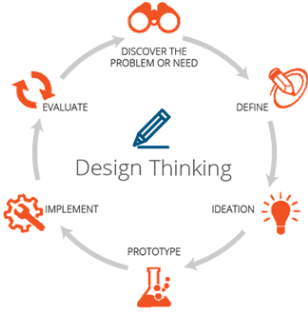There is a huge transformation underway in the Learning & Development world. The old rules of how to measure the effectiveness of learning have changed. It’s no longer the L&D department defining the rules; it’s about the learner deciding what is effective. Business functions drive the experience. Mobile and social are what learners want. So how does the traditional idea of “design” fit into this new paradigm?

In the old world, priority was placed on compliance. Compliance training drove many L&D led programs to be nothing more than “page turners.” And we know how delightful that was. Unfortunately a by-product has been that it gave instructional designers a bad reputation. Instructional designers designed boring on-line courses and therefore the problem must be instructional design itself.
The issue is not the skill of instructional design. But, the old model of L&D taking weeks and months designing and creating content for all learning experiences simply doesn’t scale in today’s fast moving business environment. The new world means design to delivery has to be faster. Concept to content has to be faster. New tools and technologies are needed.
Much like the transformation in the IT world that we recently discussed the transformation in L&D means a new way of working with the business functions to create effective learning experiences. When a business unit wants to improve performance, learning is a key part of achieving this goal.
The new world of creating modern learning experiences means modern design thinking. Leveraging design talent is an important part of this process. But the historical instructional design process has to evolve into a modern learning experience design process that incorporates the best of instructional design.
Sales enablement, customer support, and employee onboarding tools and models are changing fast, and in order to provide learning experiences that can meet the speed of business and be effective, learning design is critical. But it’s no longer simply “build or buy.” The ability to use existing assets, assemble them into a well thought out learning (learner) experience and align them with goals (expected outcomes, objectives) is the key. With the plethora of content available both inside an organization and on the web, it’s now a combination of build, buy and assemble.
This has very serious implications for instructional designers who primarily saw their job as building highly animated, interactive, handcrafted eLearning courses. That’s not what sales people want, not how people learn to use new products, nor how employees are best on-boarded.
It’s very clear that combining videos of sales leaders and high performing sales representatives, with slides, short documents or simple text guidance, case studies and other available materials, and links to resources on the web are preferable to traditional linear eLearning courses.
Blended learning is finally becoming a reality. It’s just that the blend is not simply in the classroom or online eLearning. It’s about learning experiences delivered the way the modern learner desires. How can we create, curate, assemble content and make it available 24×7 for mobile delivery? How do we continually improve the experience?
It all starts with a modern design process. If you don’t align your goals with your learning content strategy, you will likely fail. This is the part where learning designers can really help the business. Instead of making instructional design a skill that only a few people have in L&D, help the business with a design “service” that speeds time to delivery and aligns content with learning goals.
Content does not equal effective learning. But good design practices that help curate, build or buy the right content will. And that still means that instructional design is still very relevant in today’s new world of Learning Experiences.




